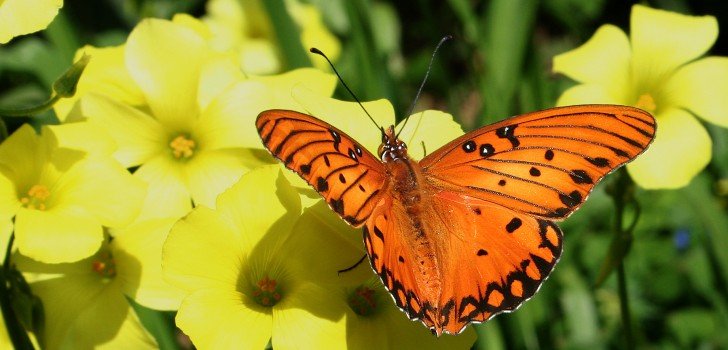In Greenland, butterflies are shrinking because of the effects of climate. Researchers are very concerned about the trend, as it could severely harm the well-being of the butterflies in the future.
According to researchers, species are able to adapt to rising temperatures in different ways. Some species relocate to new territories. Others alter the timing of their activities, such as sleeping during the day instead of at night.
However, in extreme cases, animals will make evolutionary changes in order to adapt. This includes changing the size of their bodies. This is supported by the fact that larger animals tend to be found in cooler environments. For instance, Moose in Sweden tend to be larger in northern areas of the country.
Bioscientist of Aarhus University in Denmark Joseph Bowden explains, “Metabolism increases with temperature. When it’s hotter, organisms have to burn more energy to obtain the food they need to grow, develop and reproduce. This could especially be the case for things like insects and spiders, as their physiology is under direct control from the external environment.”
The result is that butterflies have been decreasing their size in order to adapt to warmer environments.
Bowden, along with a team of colleagues, have been examining butterflies in the arctic since 1996. Their study has focused on two species of butterflies that are common to the area. The species are the Arctic fritillary butterfly and the Northern clouded yellow butterfly.
The researchers measured the wing sizes of thousands of butterflies from 1996 to 2013. They also took note of local temperatures and the rate at which snow melted.
Their results showed that butterflies of both species grew smaller wings in warmer years. The sizes of the wings changed by only one millimeter at most, but it still represents a major change in their physique.
According to Bowden, this could mean major trouble for the butterflies. Smaller wings might prevent the butterflies from travelling long distances. This could limit the gene flow of the butterflies, resulting in future generations that would be weaker than if they were able to access a larger gene pool. Future generations of butterflies in the region might be less likely to survive and reproduce.
While this is just one example, it does indicate that climate change is having an adverse effect on many arctic animals. It’s unlikely that every species on Earth will start shrinking with climate change; different species react in different ways. But it does show that animals will need to adapt if they want to survive. And sometimes, these necessary adaptations might leave the animals worse off than they were before.
Stay Connected